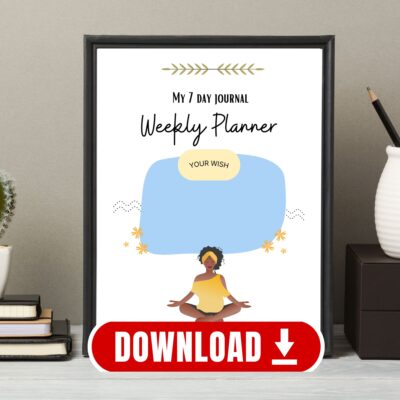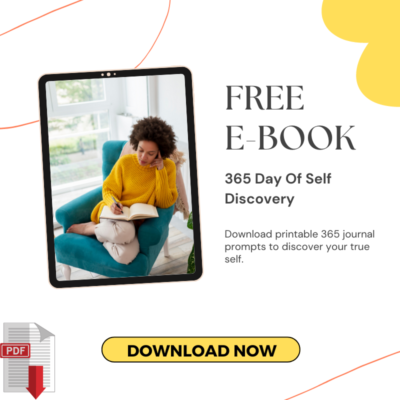Growth
6 Strategies To Unlock The Power Of Smart Decision-Making

Thirty-five thousand . . . the number of decisions the average adult is estimated to make every day. That’s more than double what most people put on their car’s odometer in a whole year!
It’s no wonder I have a near mental breakdown picking out pickles from the infinite options at the grocery store—decision fatigue is real.
From the second the alarm sounds, the decision machine gun autoloads beginning with the snooze button. How many snoozes before I’m late?
Which then rapid fires into what to wear, what to eat, where to stop for coffee, whether to slow for the yellow light or NASCAR through it because I snoozed one too many times.
And that’s just the meaningless daily minutiae decisions. What about those prickly high stakes choices? Which job to pursue? How to invest your savings? Where to live? Who to marry? When, or if, to have kids? Or better yet, whether to get a dog?—A real time dilemma and the catalyst for this very article.
After months of back and forth, I was about ready to flip a flippin’ coin or play a good ol’ fashion game of eenie-meenie-miney-mo. Seems silly, but seriously! It’s. A. Lot.
Our decisions have rewards and consequences; it’s an up and down seesaw of wins and losses where we attempt to tip the scale in our favor. The trouble is, I kind of suck at it. I’ve never been good at predicting the future.
Perhaps that’s because I’m not a wizard or a weatherman. Decisions, in essence, are merely our best guesses. We lean on emotions and perceptions to guide us—which, as you can imagine, is as reliable as a mood ring—with the hope that our choices will lead to some desirable outcome.
But with so many variables at play, how do we make the most of a thirty-five thousand question guessing game? After some research, here’s six of the best tips I gathered.
Six strategies to consider when making decisions:
1. Does your decision support your core values?
Evaluate decisions based on the beliefs that guide you and eliminate choices that conflict with those core values. We can never truly know how things might turn out differently had we made another choice, but you can rest easy if your moral compass is your guide.
Dog Decision: A Case Study—My kids (9 and 5) desperately desire a dog. My emotions and perceptions tell me I don’t want the responsibilities that come with a dog: training, vet appointments, cleaning, bathing, walking, etc. On the other hand, my core values align with the belief that my children will considerably benefit from the affection and companionship of a beloved pet.
2. Do the benefits outweigh the cost?
Just because something might be the “best deal,” does not make it the best for you. People are emotional beings who tend to focus on short-term rewards without enough consideration for long-term consequences.
A dog breeder offers a “limited time only” discount, but my future pet care fees are far greater than the immediate savings. Remember, every decision is the building block for another impending decision. That discounted dog will not only continue to wear on my wallet and my time, but it will continue to inadvertently add miles to my decision-odometer.
3. Embrace doubt.
Uncertainty pushes you out of your comfort zone. Doubt is your body’s way of sounding the alarm when actions conflict with the aforementioned core values that ground you. Best selling author and blogger Mark Manson, suggests that when examining choices, instead of asking yourself which decision is “right,” you should ask yourself which decision you would regret.
Acquiring a dog will add burdens that will change our routines and limit our freedoms, undoubtedly uncomfortable. I have serious misgivings about a dog influencing where I can vacation and for how long. On the other hand, I believe to my core that pets bring immeasurable joy, love, comfort, and all the warm fuzzies into a home. The decision is not a matter of right or wrong, rather a question of which I might regret more.
4. Beware the decoy.
Humans have a predisposition to compare. Dan Ariely, psychology professor and author of Predictably Irrational, explores this condition with the decoy effect—when people compare two similar items, introducing a third less attractive option can skew that decision.
To illustrate, imagine we have found two precious pups, both of which have a reputation for being great family pets and cost the same price. The dilemma is between Dog A who doesn’t shed, and Dog B who is more manageable in size.
The kids are equally as infatuated with both. (And no, I am most definitely not about to adopt two!) A difficult decision indeed. Now, let’s say a third option becomes available: Dog A- (A minus). This dog is just the same as A, but has a slightly higher price tag (a less appealing option). Suddenly, Dog A appears to be a more attractive deal and tips the scale in favor of a fur-free home over.
5. Narrow your options.
Americans live by the narrative that more choice equals more possibility. “It’s good to keep your options open.” But is it? Too many options bog down the brain and lead to poorer decisions.
The effort it takes to perceive differences between similar options inflates that pesky doubt bubble. Choice is seductive in theory, but painful in practice. When making a decision, it’s best to narrow the options. The more animal shelters, pet stores, and apps we explore, the more analysis paralysis delays our decision.
6. Write.
Obviously, I’m a huge proponent of writing as a tool to better understand yourself and your inner voice. As I have emphasized in previous articles, writing forces us to organize our frenzied thoughts into something concrete, enabling us to look more objectively at a situation, in this case decision-making.
Write more than just a traditional list of pros and cons, but include potential regrets and hopes; consider your core values, doubts, and possible decoys. Moving your thoughts to a page will enable you to see a situation more clearly, albeit harder than flipping for heads or tails.
The fact is, we don’t know if any of our said 35,000 decisions are any good until we’ve experienced good results. But once a decision has been made, don’t fall victim to the had-I-only-known self destruct button. Plunge ahead with the strategies and keep rolling the dice.
So, the question remains . . . did we get a dog?
We call him Palmer. He’s a golden doodle. His favorite things include, but are not limited to, posing as the hamper bandit, ring around the palm tree, and shoes . . . all of the shoes. Our hearts are full.
-

 Quotes3 months ago
Quotes3 months ago50 Life Quotes from Famous Books Ever
-

 Books3 months ago
Books3 months ago10 Life Lessons from the Book “Tuesdays with Morrie”
-

 Mindfulness3 months ago
Mindfulness3 months agoWhat Are The Benefits of Mindfulness Meditation
-

 Lifestyle3 months ago
Lifestyle3 months agoHealth Tips for Each Zodiac Sign as Per Their Lifestyle
-

 Health & Fitness3 months ago
Health & Fitness3 months agoUsing Meditation to Enhance Your Physical Fitness
-

 Mindfulness1 month ago
Mindfulness1 month agoFeeling Anxious? Try the 5-4-3-2-1 Grounding Technique
-

 Lifestyle1 month ago
Lifestyle1 month agoErgonomic Workstation: How Wavepads Protect Your Wrist










